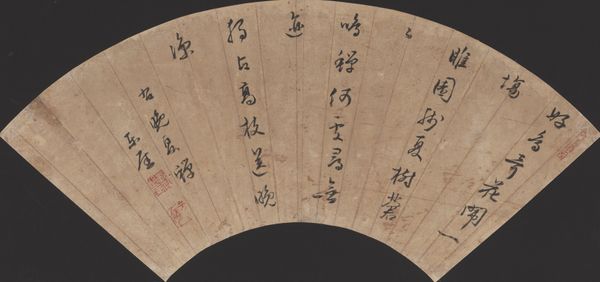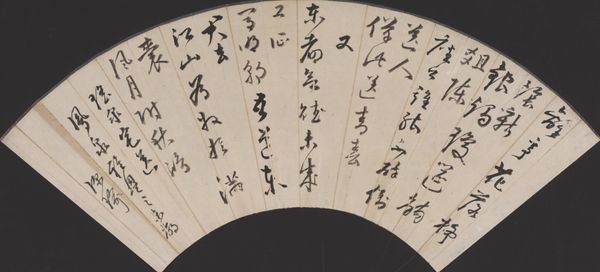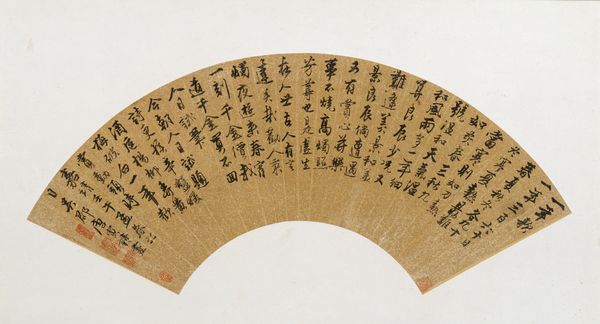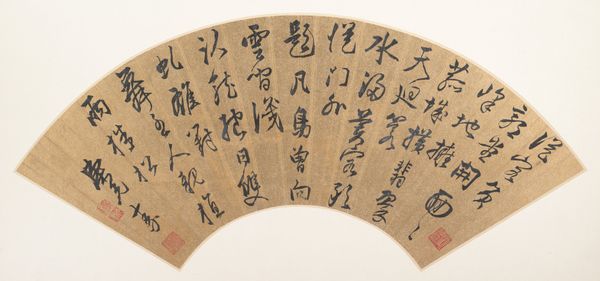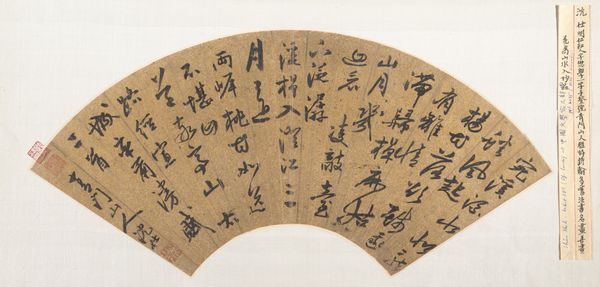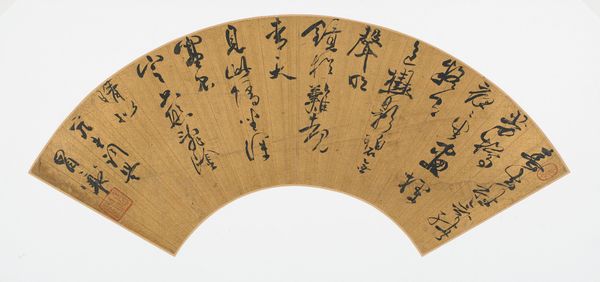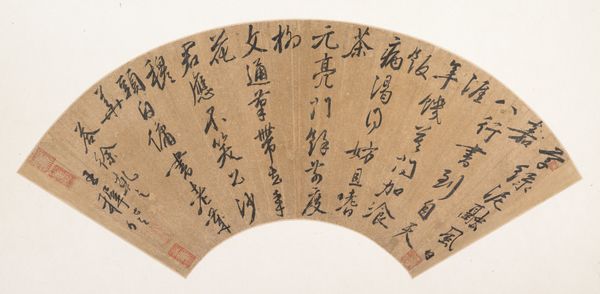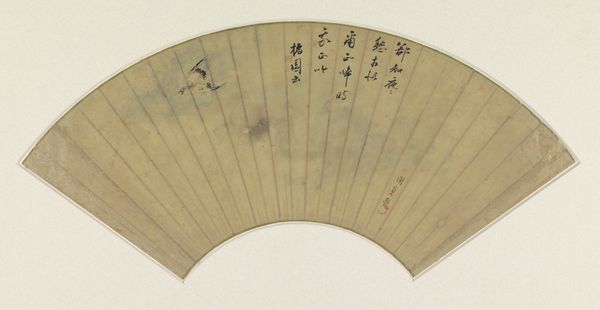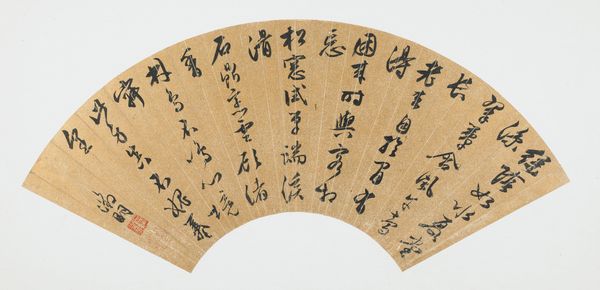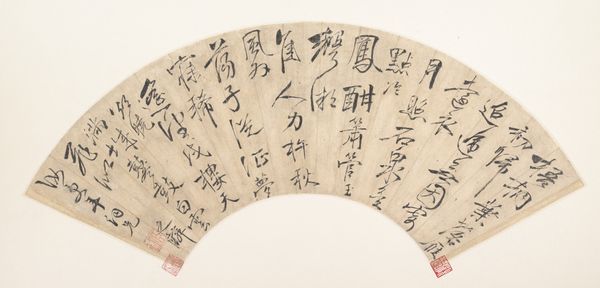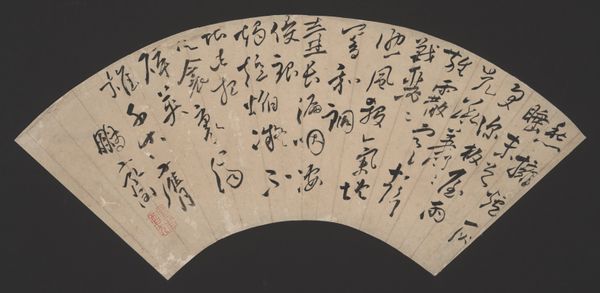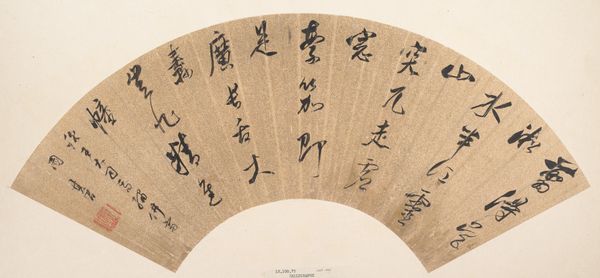
drawing, print, paper, ink
#
drawing
# print
#
asian-art
#
japan
#
paper
#
ink
#
calligraphy
Dimensions: 8 3/8 × 18 in. (21.27 × 45.72 cm)
Copyright: Public Domain
Editor: Here we have Rai San'yō's "Autumn Streams," an early 19th-century ink drawing, or perhaps a print, on paper. What strikes me is how the flowing calligraphy and fan format give it a sense of gentle movement. How do you interpret this work? Curator: This fan is more than just decorative; it’s a political statement. Rai San'yō was part of a broader intellectual movement that sought to revitalize Japanese culture by returning to its roots and advocating for social reform through Confucian ideals. Do you see how the carefully chosen classical allusions and poetic structure are, in effect, coded language for a sophisticated, educated audience? It challenges the dominant discourse of the time. Editor: So, the seemingly traditional style is actually subversive? Is the act of creating art with political undertones risky for artists? Curator: Absolutely. Consider the political climate of 19th-century Japan. Questioning authority, even through art, carried risks. The beauty of this fan lies in its layered meanings – aesthetically pleasing on the surface, yet deeply critical of the social order when understood in context. This reflects the artist’s experience as someone involved in scholarship and critique. The personal seals act almost like signatures of defiance. Editor: That's fascinating! I hadn't considered how much history and social critique could be embedded within something that seems so delicate and refined. It encourages me to really dig into the context surrounding any artwork I encounter. Curator: Precisely! And remember, art like this served to create community among like-minded thinkers, reinforcing their shared commitment to social change. We must analyze art in its cultural milieu and interpret the intentions that motivated the artist to create.
Comments
No comments
Be the first to comment and join the conversation on the ultimate creative platform.
